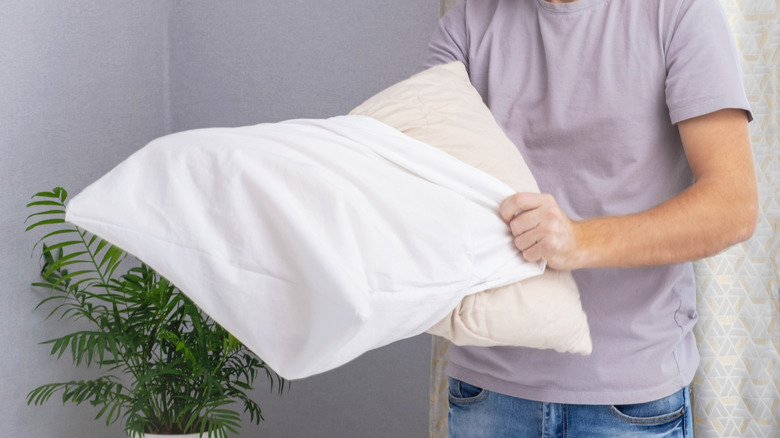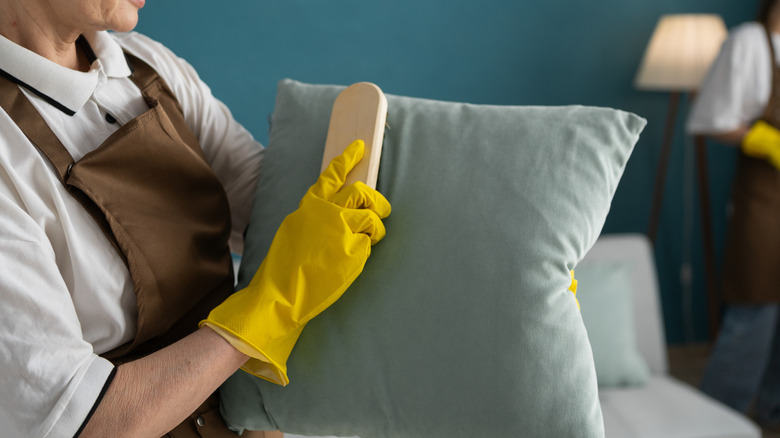How To Clean Blood Out Of A Pillow
When you wake up to blood on your pillow, you'll obviously want to figure out how it got there. Maybe it's from a minor problem like a nosebleed (which might be a sign that it's time for a humidifier) or a more concerning issue like bed bugs. But regardless of how it happened, you'll also want to address the stain.
Exposure to your own bloodstain isn't dangerous the way that another person's might be, but it's still important to act quick — the drier the stain is, the more difficult it will be to get out. Remember that blood contains protein, and when protein stains set, they bind to fabric. Using cold water instead of hot is one way to help get blood out of your pillow (and avoid making a common laundry mistake that will actually worsen the stain). Depending on the situation, you may also need to buy a detergent — one that's gentle enough for your pillow's material. Or you might already have the products you need around the house.
There are a few unexpected household products that can remove blood stains, such as salt or lemon, and you can apply these with a non-abrasive brush to lift the blood stain without damaging your pillow. Salt can break down the proteins in blood and remove the blemish from your pillow, especially when it's combined with water and left to soak. Natural products like lemon, vinegar, and baking soda are also valuable tools that work as a natural bleach. But you'll want to take note of your pillow's material, as different types process stains (and stain removers) differently. The casing of a throw pillow might be cotton, burlap, or leather, while a pillow for a bed might be made of polyester or silk.
How to address stains on different types of pillows
Though cold water is best for all blood stains because heat makes the stain set, a cotton material will benefit from soaking in an enzyme detergent, while silk is best washed with a more gentle option. An enzyme detergent (popular brands like Tide make them) contains enzymes to boost its effectiveness as a cleaner. To use one on a blood stain, fill a container or sink that can fit your pillow with cold water, add detergent to the bowl, and let it sit for 30 minutes. If the stain isn't gone, apply a small amount of detergent directly to it and dab it with a cloth or toothbrush. In terms of process, getting a blood stain out of a silk pillow is the same, but a gentle detergent is better because a harsher solution might damage the texture and fibers. And when you're cleaning a special material such as leather, you'll want to use leather cleaner and conditioner, which won't strip the pillow of its natural oils the way a regular detergent might.
For DIY solutions, you'll also need to be careful. On cotton, linen, rayon, or nylon, vinegar can ruin the fibers, and the high pH level of baking soda may cause damage and color changes to delicate materials such as silk. One way to make sure your homemade solution is safe to use is to do a small patch test to see how the stain reacts.

